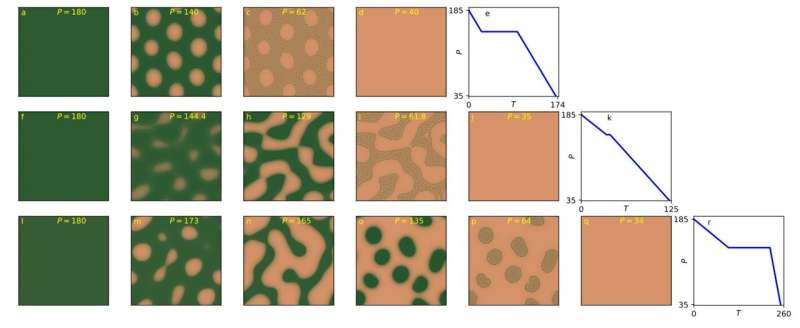This article has been reviewed according to Science X's editorial process and policies. Editors have highlighted the following attributes while ensuring the content's credibility:
fact-checked
peer-reviewed publication
trusted source
proofread
Have researchers found the missing link that explains the mysterious phenomenon known as fairy circles?

Fairy circles, a nearly hexagonal pattern of bare-soil circular gaps in grasslands, initially observed in Namibia and later in other parts of the world, have fascinated and baffled scientists for years. Theories for their appearance range from spatial self-organization induced by scale-dependent water-vegetation feedback to pre-existing patterns of termite nests.
Prof. Ehud Meron of Ben-Gurion University of the Negev has been studying the Namibian fairy circles as a case study for understanding how ecosystems respond to water stress. He believes that all theories to date have overlooked the coupling between two robust mechanisms essential for understanding ecosystem response: phenotypic plasticity at the level of a single plant, and spatial self-organization in vegetation patterns at the level of a plant population.
Phenotypic plasticity is the plant's ability to change its own traits in response to environmental stresses.
Prof. Meron, together with his postdoctoral fellows, Jamie Bennett, Bidesh Bera, and Michel Ferré, and his colleagues, Profs. Hezi Yizhaq and Stephan Getzin, propose a novel model that captures both spatial patterning by a scale-dependent water-vegetation feedback and phenotypic changes involving deep-root growth to reach a moister soil layer.
By comparing model predictions with empirical observations, they show that the coupling between these two mechanisms is the key to resolving two outstanding puzzles that the classical theory of vegetation pattern formation fails to explain: the appearance of multi-scale fairy-circle patterns, where the matrix in between the fairy circles consists of small-scale vegetation spots, and the absence of stripe and spot patterns, besides gap patterns, along the rainfall gradient, as the classical theory predicts.
Furthermore, they find that the combination of plant-level phenotypic changes and population-level spatial patterning can result in many additional pathways of ecosystem response to water stress, resulting in different multi-scale patterns, all of which are significantly more resilient to water stress than those involving a single phenotype.
Their findings are published in the Proceedings of the National Academy of Sciences.
"Identifying these alternative pathways is essential for shifting fragile ecosystems on tracks to collapse to pathways of resilience," explains Prof. Meron. "This study highlights the importance of considering more elements of ecosystem complexity when addressing how to evade tipping to dysfunctional ecosystem states as warmer and drier climates develop."
More information: Jamie J. R. Bennett et al, Phenotypic plasticity: A missing element in the theory of vegetation pattern formation, Proceedings of the National Academy of Sciences (2023). DOI: 10.1073/pnas.2311528120
Journal information: Proceedings of the National Academy of Sciences
Provided by Ben-Gurion University of the Negev




















